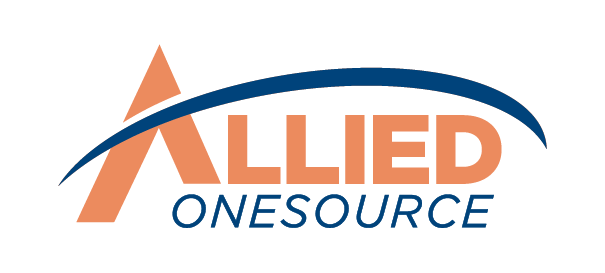The Talent Shortage Myth: Why Your Best Candidates Are Already in Your Workforce
Companies across industries consistently struggle to fill critical positions, with 87 percent of organizations worldwide reporting skill gaps or expecting them within the next few years.¹ This widespread challenge has led many to believe in an unavoidable "talent shortage" that hampers growth and innovation.
What if the talent shortage you’re struggling with isn’t a shortage at all? What if the solution to your hiring challenges isn't searching external markets, but current employees within your own organization?
The truth is, the best candidates for your open roles might already be working for you. By focusing on internal mobility—identifying, developing, and promoting existing employees—you can fill critical roles faster, reduce recruitment costs, and boost employee retention.
Let’s explore how you can unlock the potential of your workforce and turn the talent shortage myth on its head.
The Hidden Goldmine in Your Workforce
When positions open up, the typical response is to post job ads and start screening external candidates. This approach overlooks the wealth of talent that has already proven their value to your organization.
Large companies also lose between $228-$355 million annually due to employee turnover, with replacement costs averaging $4,129 per employee.
Consider this scenario: A project coordinator in your operations department has developed exceptional analytical skills and process optimization abilities over three years with your company. They understand your systems, culture, and clients.
With some targeted training in leadership and advanced project management, they could step into a senior management role that you've been struggling to fill for months. The solution to your "talent shortage" has been on your payroll all along.
Internal mobility offers several measurable advantages over external hiring:
- Cost Savings: Reducing recruitment, onboarding, and training expenses associated with external hires.
- Faster Role Fulfillment: Promoting internal candidates typically takes less time than the full external hiring cycle.
- Improved Retention and Engagement: When employees see growth opportunities within the organization, they're more likely to stay and remain engaged.
- Higher Performance: Internal hires already understand your company culture and processes, allowing them to contribute effectively sooner.
These benefits are particularly relevant in industries where specialized knowledge and company-specific experience provide significant advantages. By investing in your employees, you're not just filling roles; you're building a loyal, engaged workforce while maximizing your return on human capital investment.
How to Develop Your Existing Talent and Harness their Potential
So, how do you turn your existing employees into your next leaders? The key lies in creating opportunities for growth and development within your organization.
Here’s how:
1. Reskilling and Upskilling Programs
Create upskilling and reskilling programs that are tailored for your specific industry. In call centers, for instance, agents with strong communication skills can be trained in data analysis or quality assurance while machine operators with technical aptitude can be upskilled in automation or maintenance.
For managerial roles, high-performing supervisors can be groomed for leadership roles through targeted development programs.
Consider this scenario: You have a machine operator who’s been with your company for five years. With the right training in advanced automation, they could transition into a maintenance role, reducing your need for external hires. This fills a critical gap and boosts their morale and loyalty to your company.
2. Mentorship and Career Pathing
Pairing high-potential employees with mentors can help them develop the skills needed for advancement. For example, a supervisor could mentor an agent, guiding them toward a managerial role. Clear career paths give employees a sense of direction and purpose, making them more likely to stay and grow with your organization.
3. Internal Talent Marketplaces
An internal talent marketplace is a platform where employees can explore open roles, projects, or gigs within the company. Imagine a machine operator applying for a temporary logistics project, showcasing their potential for a lateral move. Internal talent marketplaces foster transparency and encourage employees to take ownership of their career growth.
4. Succession Planning
Identifying and preparing future leaders is crucial for organizational continuity, distinct from day-to-day mentorship. Effective succession planning identifies critical roles, maps potential internal candidates, and creates structured development paths to prepare employees for advancement.
For example, you might identify a technical specialist with leadership potential and gradually involve them in management responsibilities. When higher positions open, you'll have qualified internal candidates ready. This approach demonstrates long-term investment in employees' careers, giving them compelling reasons to build their future with your organization rather than looking elsewhere.
Building a Culture That Thrives on Internal Mobility
Creating an environment where internal mobility flourishes requires intentional effort and organizational commitment.
Leadership Buy-In
It starts with leadership championing career development as a core value and making internal candidates the first consideration for open positions. When executives visibly support and participate in mobility initiatives, it signals their importance to the entire organization.
Transparent Communication
Employees can't pursue opportunities they don't know exist. Implement regular communication about open roles, create clear career pathways that show possible progression routes, and highlight internal mobility success stories. Consider establishing a dedicated internal job board or talent marketplace where employees can explore opportunities across departments.
Manager Incentives
Recognition systems should reward managers who develop and promote talent rather than hoarding high performers. When leaders are evaluated partly on how well they support team members' growth, internal mobility becomes embedded in your operational DNA rather than just an HR initiative.
Addressing Common Barriers
Despite the clear benefits, you may encounter resistance. Some managers fear losing top performers, departments may be reluctant to collaborate on talent sharing, and employees might lack awareness of available opportunities. Combat these challenges by creating formal policies for internal applications, establishing cross-departmental talent reviews, and regularly communicating success stories.
Balancing Internal and External Talent
While prioritizing internal mobility, recognize when external perspectives are truly needed. The goal isn't to eliminate external hiring but to create a thoughtful approach where internal candidates are properly considered before looking outside.
Is Your Organization Internally Agile? Rate Your Mobility Readiness
Before enhancing your internal mobility initiatives, consider these key questions to assess your current capabilities and identify opportunities for improvement:
- Do you have a clear understanding of the skills and talents that already exist within your organization?
- Have you created transparent systems where employees can easily discover internal opportunities?
- Does your organization provide targeted development resources that prepare employees for their next roles?
- Are your managers incentivized to develop talent, or do they tend to hold onto high performers?
- How do you measure the success of internal movements and career progression within your company?
- Do employees understand potential career paths within the organization beyond their current departments?
- Have you identified specific roles that would benefit most from internal candidates versus external hires?
- Is knowledge transfer between departing employees and their replacements a formalized process?
- How would your leadership team respond to prioritizing internal candidates before external recruitment?
Use these questions to guide conversations with your leadership team and strengthen your approach to leveraging the talent already within your organization.
The future of talent is already in your hands
Stop searching for solutions to talent shortages when the answer is right in front of you. Your best candidates might already be working for you—they just need the opportunity to shine. By focusing on internal mobility, your organization can transform perceived talent shortages into strategic advantages while creating a workplace where employees are empowered to grow.
Ready to unlock your workforce's potential? Partner with Allied OneSource to design a customized internal mobility program that aligns with your business goals. Together, we can turn the talent shortage myth into a growth and success story. Contact Us today!
Reference
1. "Beyond Hiring: How Companies Are Reskilling to Address Talent Gaps." McKinsey & Company, 12 Feb. 2020, https://www.mckinsey.com/capabilities/people-and-organizational-performance/our-insights/beyond-hiring-how-companies-are-reskilling-to-address-talent-gaps.











